Your cart is currently empty!
Tag: Savings
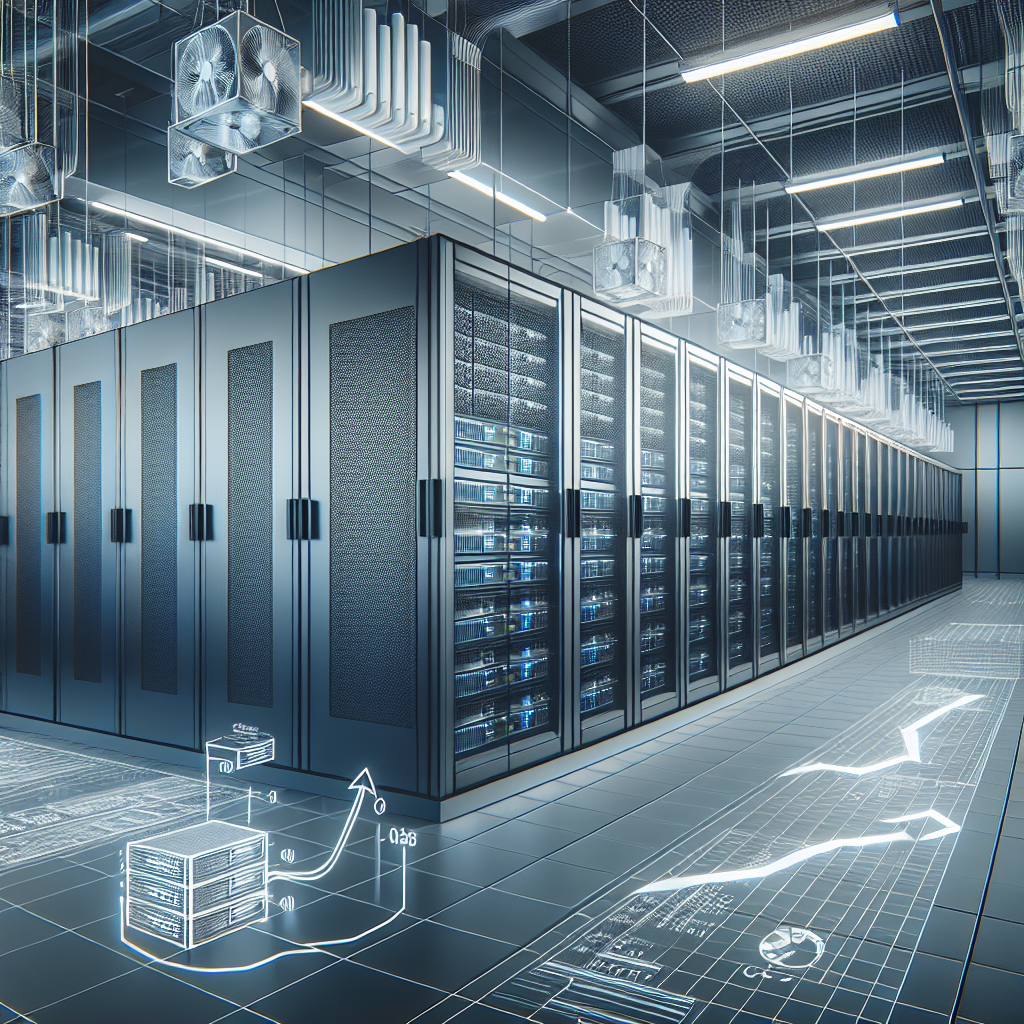
Optimizing Data Center HVAC Systems for Efficiency and Cost Savings
Optimizing Data Center HVAC Systems for Efficiency and Cost SavingsData centers are a critical component of modern businesses, housing the servers and networking equipment that enable organizations to function and thrive in today’s digital world. However, data centers are also notorious for their high energy consumption, with cooling systems typically accounting for a significant portion of their electricity usage. In fact, according to the U.S. Department of Energy, data centers can consume up to 100 times more energy per square foot than a typical office building.
Given the increasing pressure to reduce energy consumption and operating costs, optimizing data center HVAC (Heating, Ventilation, and Air Conditioning) systems for efficiency and cost savings has become a top priority for data center managers and operators. By employing a combination of best practices, advanced technologies, and strategic planning, data center operators can significantly reduce their energy consumption and operating costs without compromising the performance and reliability of their IT infrastructure.
One of the key strategies for optimizing data center HVAC systems is to properly design and configure the cooling infrastructure to meet the specific needs of the data center. This includes selecting the right type of cooling system (such as air-cooled or water-cooled), positioning cooling units strategically to maximize airflow and minimize hot spots, and implementing technologies like hot aisle/cold aisle containment to improve cooling efficiency.
In addition to proper design and configuration, regular maintenance and monitoring of HVAC systems are essential for optimal performance and energy efficiency. This includes routine cleaning and inspection of cooling units, monitoring temperature and humidity levels, and implementing predictive maintenance practices to identify and address potential issues before they escalate.
Another important aspect of optimizing data center HVAC systems is leveraging advanced technologies like variable speed drives, economizers, and free cooling solutions. Variable speed drives allow cooling units to adjust their speed based on demand, reducing energy consumption during periods of low activity. Economizers and free cooling solutions utilize outside air or water sources to cool the data center, reducing the reliance on mechanical cooling systems and lowering energy costs.
Furthermore, implementing energy management and monitoring systems can provide real-time visibility into the performance of HVAC systems, enabling data center operators to identify opportunities for optimization and track energy usage and cost savings over time. By leveraging data analytics and automation, data center operators can make informed decisions and adjustments to optimize HVAC systems for maximum efficiency and cost savings.
In conclusion, optimizing data center HVAC systems for efficiency and cost savings is essential for reducing energy consumption, lowering operating costs, and improving the overall sustainability of data center operations. By implementing a combination of best practices, advanced technologies, and strategic planning, data center operators can achieve significant energy savings and cost reductions without compromising the performance and reliability of their IT infrastructure. Investing in the optimization of HVAC systems is not only good for the environment but also for the bottom line, making it a win-win solution for data center operators looking to improve their energy efficiency and sustainability.
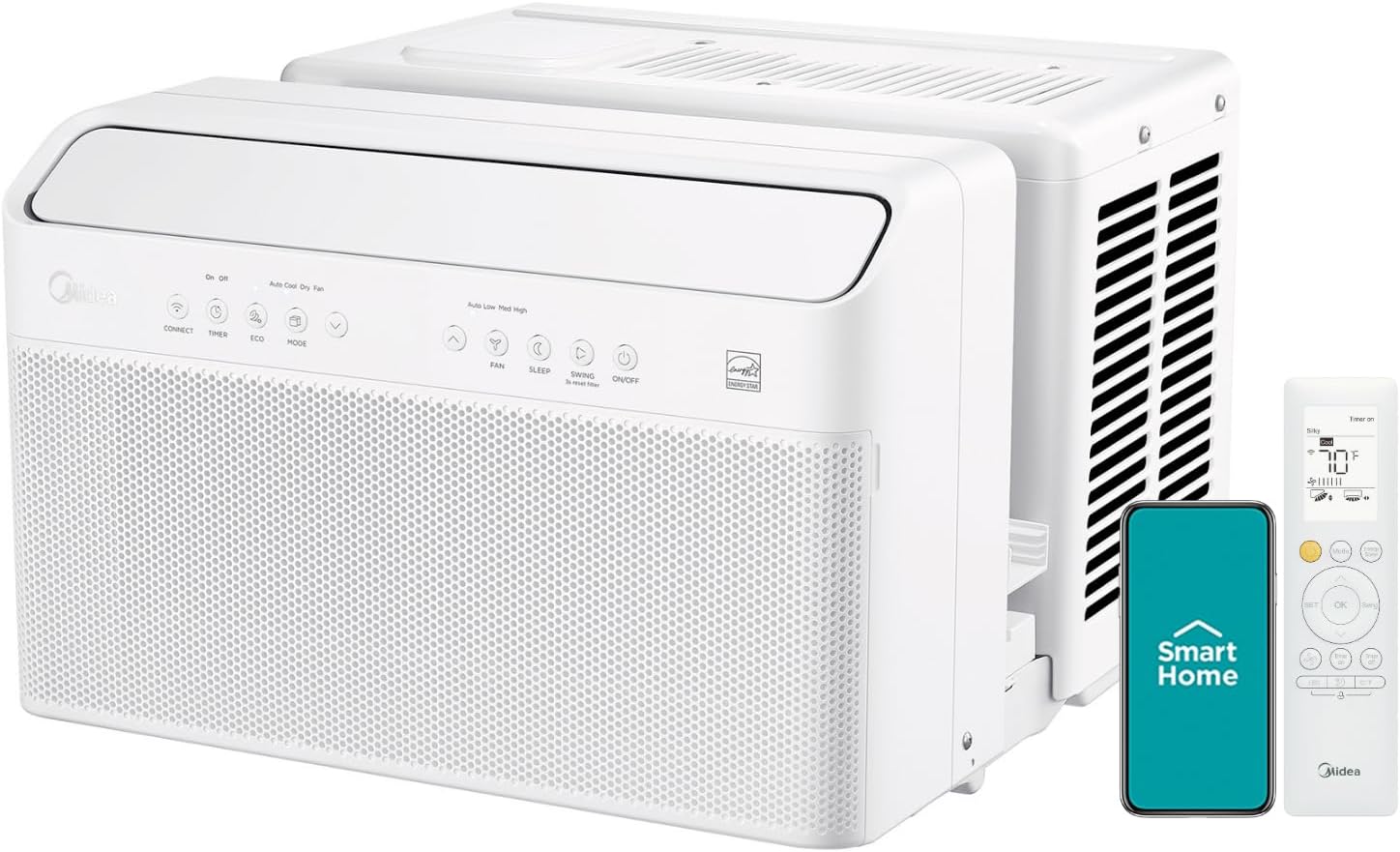
Midea 10,000 BTU U-Shaped Smart Inverter Window Air Conditioner–Cools up to 450 Sq. Ft., Ultra Quiet with Open Window Flexibility, Works with Alexa/Google Assistant, 35% Energy Savings, Remote Control
Price:$429.99– $364.99
(as of Nov 22,2024 02:20:45 UTC – Details)
Introducing the first U-shaped Inverter Window Air Conditioner allows you to open or close your window while the unit is installed.Ultra Quiet – The U-shaped design blocks the noise from the outside compressor.
Long-distance Airflow up to 20 feet – The strong Airflow allows you to feel the cold air up to 20 feet away.
Warranty – 1 Year Parts & Labor Warranty comes with each Midea product to ensure the quality of our brand to our customers. Our team is happy to help if any questions or issues arise, and make sure to register your product on our website for even faster support in the future.FAQs:
1. Does the product comes with a mounting bracket and mounting accessories?
– The product includes a quick-snap bracket. No separate purchase is needed.
2. This is my first installation experience. How can I install the item?
– You can read the instruction of the installation manual or watch the installation video on the detail page.
3. I found that there are missing parts in the package.
– Please check the packages to avoid missing accessories in the corner or under the foam (ex., L brackets). We are always happy to assist you by hotline and email.
4. There is a gap between the body and the accessories after installation.
– Please watch the installation video on the product page for steps to seal the gap.
5. The machine is not cooling or cooling slowly.
– Please select the appropriate capacity section according to the recommended area. (2) Check if the machine is in cooling mode. (3) May need a larger unit depending on your area’s climate.
6. Can the display light of the machine and the key “beep” sound be turned off?
– Yes, you can turn off the display light and sound in the new application .
ULTRA QUIET – The U-shape design of Midea U Smart Inverter AC uses your window to block noise outside. The highly-efficient inverter system warrants ultra-low noise and vibration, 9x quieter than traditional units with operation as low as 32 dBA.Cooling Watts : 890W. Rated Cooling Amps (AHAM) : 9.97.Control Type : Electronic. Refrigerant : R32
MORE THAN 35% ENERGY SAVINGS – With the advanced DC Inverter technology, Midea U achieves over 35% energy savings compared to other traditional units. It is the first window AC to obtain the ENERGY STAR Most Efficient Certification
SMART CONTROL – Midea U Smart Inverter AC is Wi-Fi enabled and can be controlled from anywhere using the MSmartHome app on iOS or Android. You can also use voice commands throughout your house, office, or apartment using Alexa or Google Assistant devices
FLEXIBLE WINDOW OPENING – The U-shaped design allows your window to open, bringing fresh air into your home and maintaining more of your view when the unit is installed. When the window is closed, the Anti-Theft Mechanism locks the window for added safety
ROBUST INSTALLATION – Install the included quick-snap bracket, set the unit on the bracket, and secure the sidearms. Then you are all done and ready to enjoy. Available for single-hung or double-hung windows with width 22″-36″, minimal height at 13.75″Customers say
Customers like the quietness, functionality, and cooling ability of the air conditioner. They mention it’s very quiet, works well, and cools much better. Some also appreciate the design and energy efficiency. However, some customers differ on the ease of installation and longevity.
AI-generated from the text of customer reviews
Looking for a powerful and efficient air conditioner to keep your space cool and comfortable? Look no further than the Midea 10,000 BTU U-Shaped Smart Inverter Window Air Conditioner!This innovative air conditioner is designed to cool up to 450 square feet, making it perfect for bedrooms, living rooms, and even small apartments. With its ultra quiet operation, you can enjoy a cool environment without any distracting noise.
One of the standout features of this air conditioner is its open window flexibility. Unlike traditional window air conditioners, the U-shaped design of this unit allows you to open and close your window with ease, maintaining a sleek and unobtrusive appearance.
In addition to its convenient design, this air conditioner is also smart-enabled, allowing you to control it using Alexa or Google Assistant. You can easily adjust the temperature, set schedules, and monitor energy usage from anywhere using your smartphone or voice commands.
Not only is this air conditioner convenient and efficient, but it also helps you save on energy costs. With a 35% energy savings compared to traditional models, you can stay cool without breaking the bank.
Say goodbye to sweltering summer days and restless nights with the Midea 10,000 BTU U-Shaped Smart Inverter Window Air Conditioner. Stay cool, comfortable, and in control with this innovative and powerful cooling solution.
#Midea #BTU #UShaped #Smart #Inverter #Window #Air #ConditionerCools #Ultra #Quiet #Open #Window #Flexibility #Works #AlexaGoogle #Assistant #Energy #Savings #Remote #Control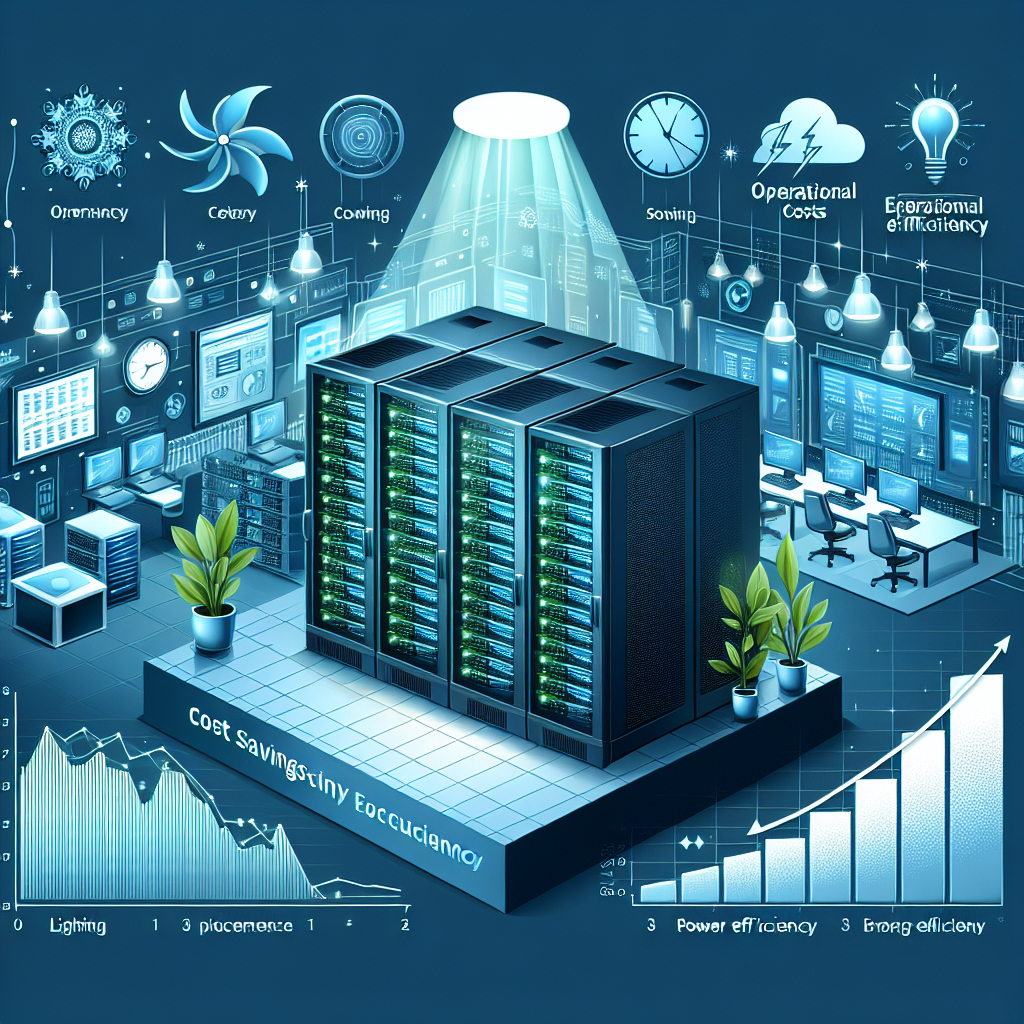
Driving Cost Savings Through Data Center Operational Efficiency
In today’s digital age, data centers have become the backbone of businesses, enabling them to store, process, and manage vast amounts of data. However, running a data center can be costly, with energy consumption and maintenance fees adding up quickly. As businesses look for ways to cut costs and improve efficiency, driving cost savings through data center operational efficiency has become a top priority.One of the key ways to achieve cost savings in a data center is through optimizing operational efficiency. By maximizing the use of resources and reducing wastage, businesses can significantly reduce their operating costs. This can be achieved through a combination of strategies, including implementing energy-efficient technologies, improving cooling systems, and streamlining data center processes.
One of the most effective ways to drive cost savings in a data center is through the use of data analytics. By analyzing data on energy consumption, server utilization, and cooling efficiency, businesses can identify areas where improvements can be made. For example, by consolidating servers or virtualizing workloads, businesses can reduce the amount of energy and cooling required, leading to significant cost savings.
In addition to data analytics, businesses can also drive cost savings through proactive maintenance and monitoring of data center equipment. By regularly monitoring equipment performance and addressing issues before they escalate, businesses can prevent costly downtime and extend the lifespan of their hardware. This can help businesses avoid expensive repairs and replacements, ultimately saving money in the long run.
Furthermore, businesses can also drive cost savings through strategic planning and optimization of data center layout and design. By optimizing the physical layout of the data center, businesses can improve airflow, reduce cooling requirements, and maximize the use of space. This can lead to lower energy consumption and reduced operational costs.
Overall, driving cost savings through data center operational efficiency requires a holistic approach that combines data analytics, proactive maintenance, and strategic planning. By optimizing resources, reducing wastage, and improving efficiency, businesses can achieve significant cost savings in their data center operations. As businesses continue to rely on data centers to power their operations, driving cost savings through operational efficiency will be crucial in ensuring long-term success and competitiveness.
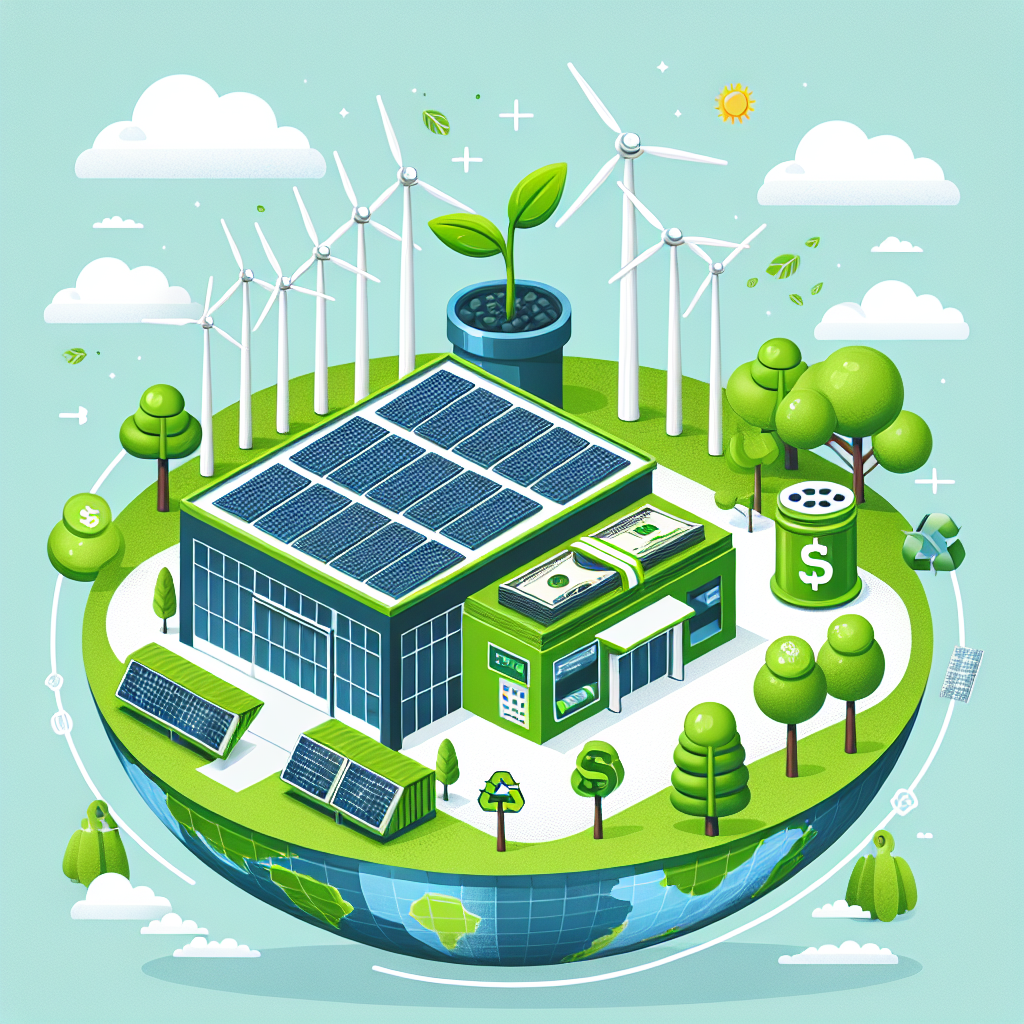
The Business Case for Sustainable Data Centers: Cost Savings and Environmental Benefits
In today’s digital age, data centers are the backbone of modern businesses, providing the infrastructure needed to store, process, and manage vast amounts of data. However, the environmental impact of data centers has become a growing concern, as they consume massive amounts of energy and produce significant amounts of carbon emissions.In response to these concerns, many businesses are now looking towards sustainable data centers as a way to reduce their environmental footprint while also saving on costs. By employing energy-efficient technologies and practices, businesses can not only reduce their carbon emissions but also realize significant cost savings in the long run.
One of the key benefits of sustainable data centers is their ability to lower energy consumption. By implementing energy-efficient technologies such as virtualization, cooling optimization, and renewable energy sources, businesses can significantly reduce their electricity bills. In fact, studies have shown that sustainable data centers can achieve energy savings of up to 80% compared to traditional data centers.
In addition to cost savings, sustainable data centers also offer environmental benefits. By reducing their carbon footprint, businesses can help combat climate change and contribute to a more sustainable future. This can also improve their corporate image and attract environmentally-conscious customers who prefer to do business with companies that prioritize sustainability.
Furthermore, sustainable data centers can also help businesses comply with increasing regulations and standards related to environmental sustainability. By investing in green technologies and practices, businesses can ensure that they are meeting regulatory requirements and reducing their environmental impact.
Overall, the business case for sustainable data centers is clear. By reducing energy consumption, lowering costs, and improving their environmental footprint, businesses can create a more sustainable and efficient infrastructure for their data storage and processing needs. As the demand for data continues to grow, investing in sustainable data centers is not only a smart business decision but also a responsible choice for the planet.
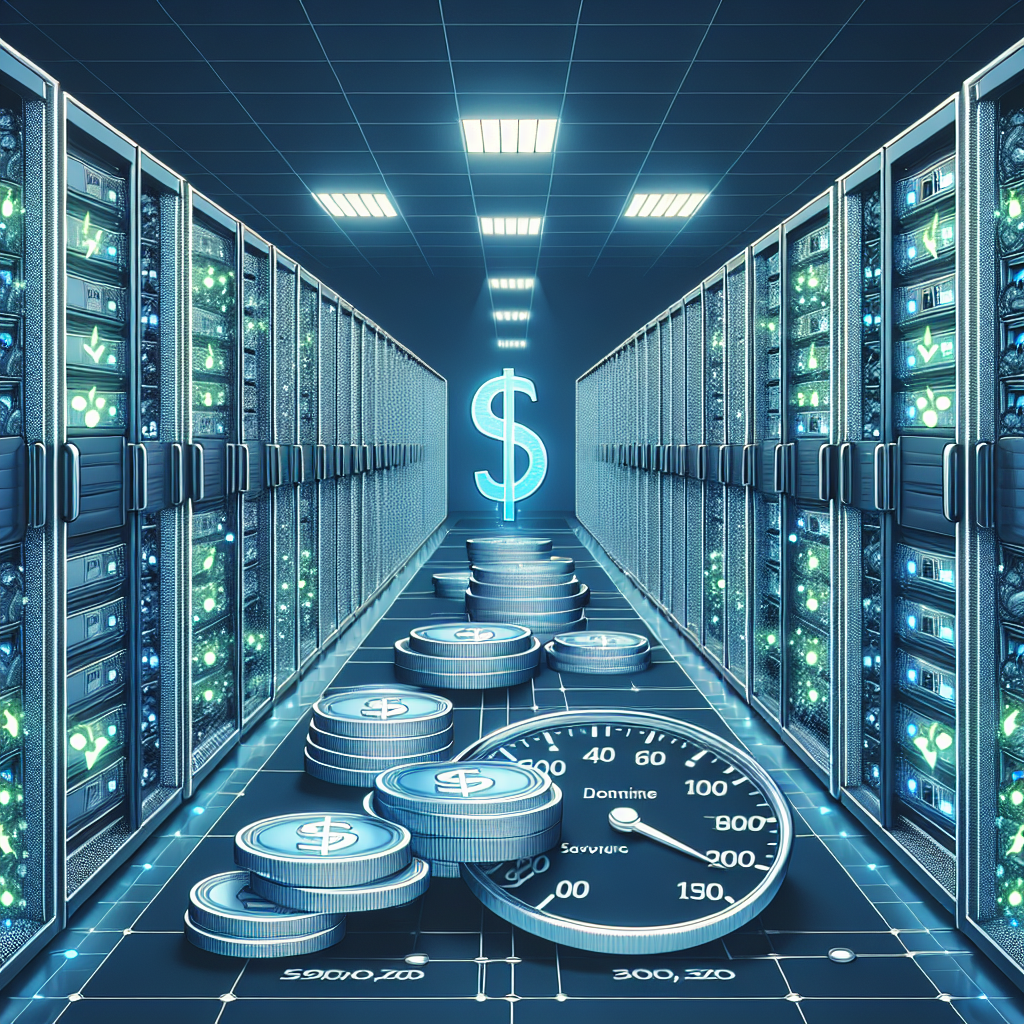
Cost Savings and Performance Gains: The Benefits of Operational Efficiency in Data Centers
In today’s digital age, data centers play a crucial role in the operation of businesses of all sizes. These facilities house the servers, storage devices, networking equipment, and other infrastructure necessary to support the vast amounts of data generated and processed by organizations on a daily basis. As the demand for data storage and processing continues to grow, it is more important than ever for data centers to operate efficiently in order to maximize cost savings and performance gains.Operational efficiency in data centers refers to the ability to deliver the desired level of service with the least amount of resources. This includes optimizing the use of power, cooling, space, and IT equipment, as well as streamlining processes and workflows to minimize downtime and improve overall performance. By focusing on operational efficiency, data center operators can reduce operational costs, improve reliability, and increase the overall effectiveness of their facilities.
One of the key benefits of operational efficiency in data centers is cost savings. By optimizing the use of resources and reducing waste, data center operators can lower their operational expenses and improve their bottom line. For example, by implementing energy-efficient cooling systems, data centers can reduce their power consumption and lower their electricity bills. Similarly, by consolidating servers and storage devices, data centers can reduce their hardware costs and save on maintenance and support expenses.
In addition to cost savings, operational efficiency can also lead to performance gains in data centers. By streamlining processes and workflows, data center operators can improve the speed and reliability of their operations, leading to better performance and a higher level of service for their customers. For example, by implementing automated monitoring and management systems, data centers can quickly identify and resolve issues before they impact performance, ensuring that services are delivered consistently and reliably.
Furthermore, operational efficiency in data centers can also lead to environmental benefits. By reducing energy consumption and implementing sustainable practices, data centers can lower their carbon footprint and contribute to a greener and more sustainable future. This not only benefits the environment but also enhances the reputation of the data center operator as a responsible corporate citizen.
In conclusion, operational efficiency is essential for data centers to achieve cost savings and performance gains. By optimizing the use of resources, improving processes, and implementing sustainable practices, data center operators can lower their operational costs, improve their reliability, and enhance their overall effectiveness. As the demand for data storage and processing continues to grow, operational efficiency will play an increasingly important role in ensuring the success and sustainability of data centers in the future.
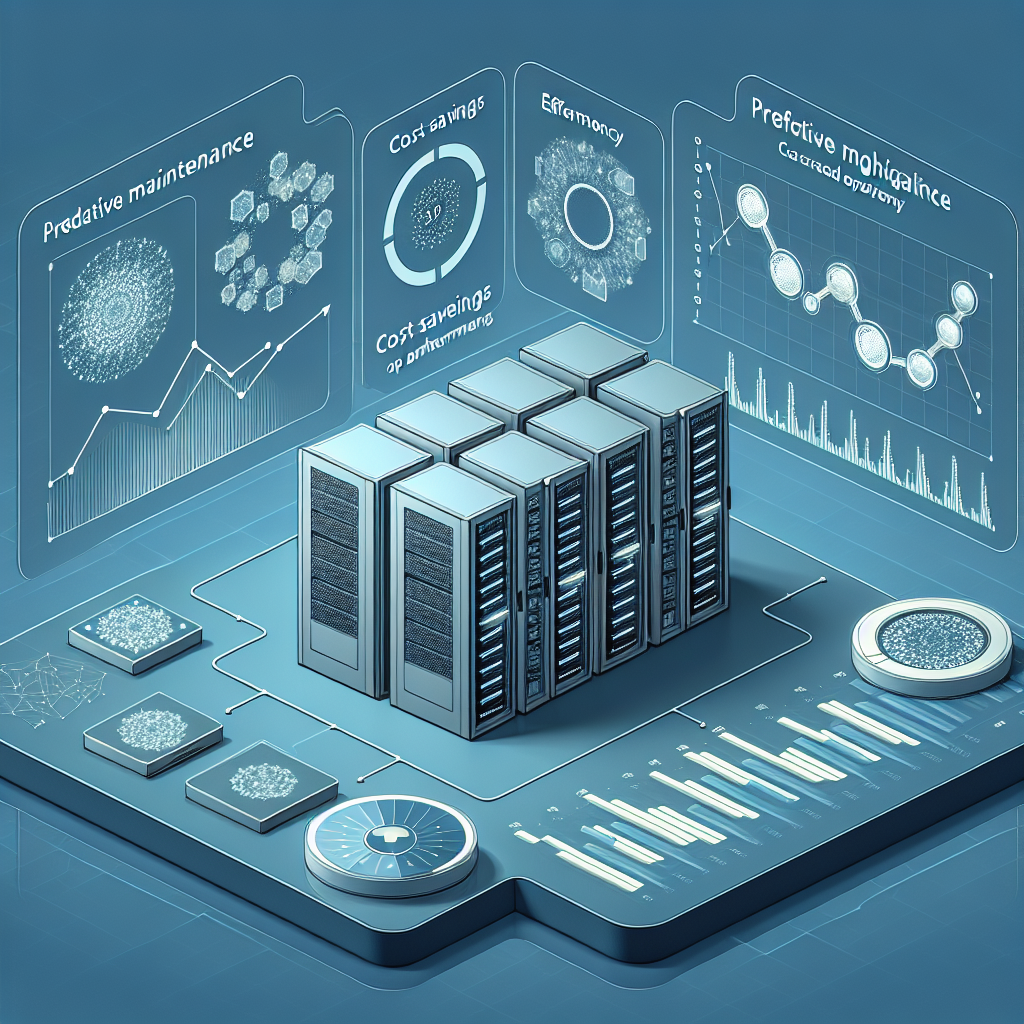
Driving Cost Savings and Performance with Data Center Predictive Maintenance
Data centers are the backbone of modern business operations, housing the critical infrastructure that supports everything from email communication to online transactions. As such, ensuring the reliability and efficiency of data center operations is crucial for businesses looking to stay competitive in today’s fast-paced digital economy.One of the key strategies for driving cost savings and performance in data centers is through predictive maintenance. Predictive maintenance leverages the power of data analytics and machine learning to anticipate and prevent potential equipment failures before they occur. By continuously monitoring key performance indicators and analyzing historical data, data center operators can identify patterns and trends that signal impending issues, allowing them to proactively address maintenance needs and avoid costly downtime.
By implementing a predictive maintenance program, data center operators can realize a number of significant benefits. First and foremost, predictive maintenance helps to extend the lifespan of critical equipment by addressing issues before they escalate into major failures. This not only reduces the risk of unplanned downtime, but also minimizes the need for costly emergency repairs and replacements.
In addition to improving equipment reliability, predictive maintenance can also help drive cost savings by optimizing maintenance schedules and reducing overall maintenance costs. By prioritizing maintenance tasks based on data-driven insights, data center operators can minimize unnecessary maintenance activities and focus resources on the most critical areas. This not only reduces operational costs, but also increases the efficiency of maintenance operations, freeing up valuable resources for other strategic initiatives.
Furthermore, predictive maintenance can also help improve overall data center performance by identifying opportunities for process improvements and optimizing equipment performance. By analyzing real-time data and performance metrics, data center operators can fine-tune equipment settings and configurations to maximize efficiency and ensure optimal performance levels. This can result in lower energy consumption, improved cooling efficiency, and better overall performance, ultimately driving cost savings and enhancing the overall reliability of the data center.
In conclusion, predictive maintenance is a powerful tool for driving cost savings and performance in data centers. By leveraging the power of data analytics and machine learning, data center operators can proactively address maintenance needs, optimize equipment performance, and minimize downtime, ultimately improving the reliability and efficiency of data center operations. As businesses continue to rely on data centers to support their digital operations, investing in predictive maintenance is essential for staying competitive in today’s rapidly evolving digital landscape.
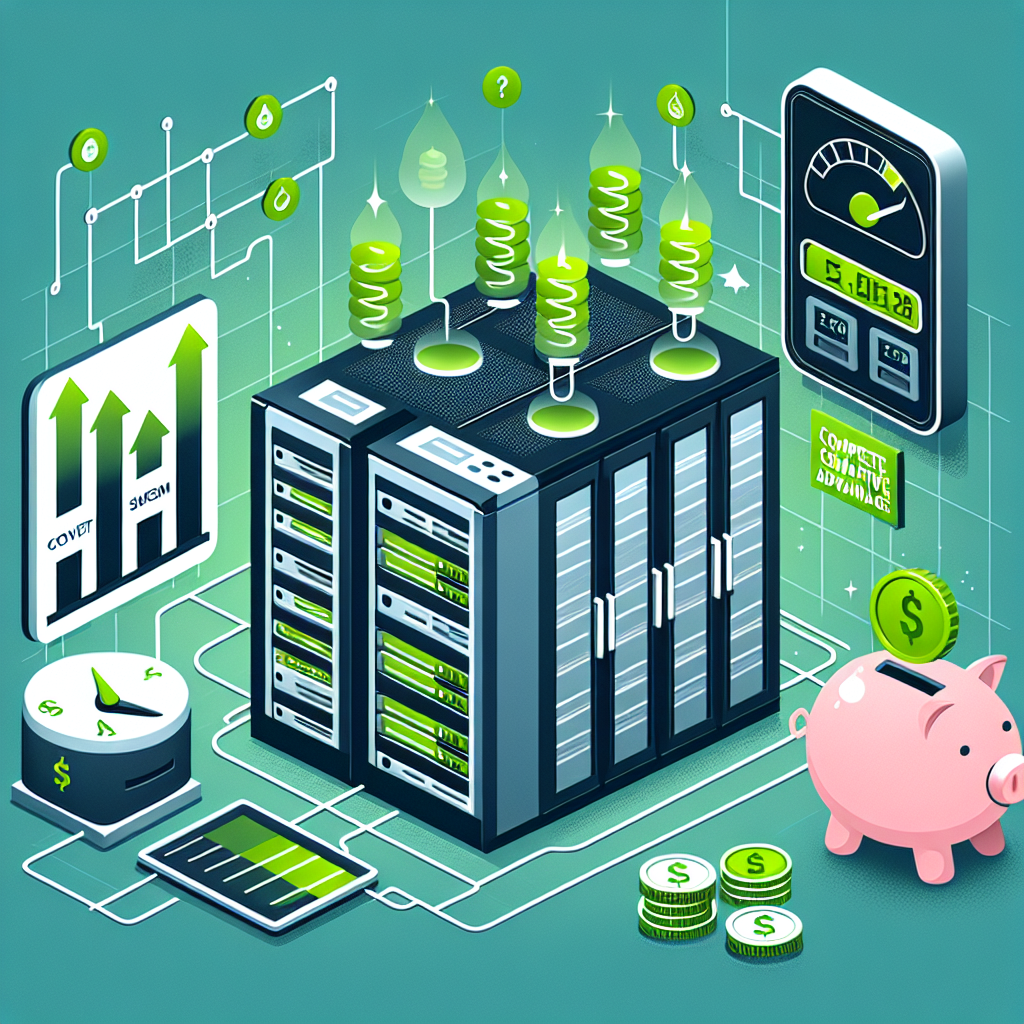
The Business Case for Data Center Energy Efficiency: Cost Savings and Competitive Advantage
In today’s digital age, data centers are critical to the operation of businesses across all industries. These facilities house the servers and networking equipment that store, process, and distribute vast amounts of data. However, data centers are also notorious for their high energy consumption, leading to significant costs for businesses and environmental concerns.As businesses continue to rely on data centers to support their operations, the need for energy efficiency in these facilities has become more important than ever. Not only does energy efficiency help reduce costs, but it also provides a competitive advantage in today’s market.
Cost Savings
One of the most compelling reasons for businesses to prioritize energy efficiency in their data centers is the potential for cost savings. Data centers are among the largest consumers of electricity in commercial buildings, and energy costs can quickly add up for businesses operating these facilities.
By implementing energy-efficient practices, businesses can significantly reduce their energy consumption and lower their utility bills. This can result in substantial cost savings over time, allowing businesses to allocate those savings towards other strategic initiatives or investments.
In addition to direct cost savings, energy efficiency can also help businesses avoid costly downtime and equipment failures. By optimizing cooling systems, upgrading equipment, and implementing monitoring and management tools, businesses can improve the reliability and performance of their data centers, reducing the risk of costly disruptions.
Competitive Advantage
In today’s competitive business landscape, energy efficiency can also provide a significant competitive advantage. Consumers and stakeholders are increasingly prioritizing sustainability and environmental responsibility, and businesses that demonstrate a commitment to energy efficiency can differentiate themselves in the market.
By showcasing their energy-efficient data centers, businesses can attract environmentally-conscious customers and partners, enhance their brand reputation, and even access new market opportunities. In addition, energy efficiency can also improve overall operational efficiency and productivity, allowing businesses to deliver better services and products to their customers.
Furthermore, energy efficiency can also help businesses comply with regulations and standards related to energy consumption and environmental impact. By proactively addressing these requirements, businesses can avoid potential fines, penalties, and reputational damage, ensuring long-term sustainability and compliance with industry best practices.
In conclusion, the business case for data center energy efficiency is clear: cost savings, competitive advantage, and environmental responsibility. By investing in energy-efficient practices and technologies, businesses can not only reduce their operational costs and improve their bottom line but also position themselves as leaders in sustainability and innovation. As data centers continue to play a critical role in supporting business operations, prioritizing energy efficiency is essential for long-term success and growth.

Maximizing Efficiency and Cost Savings Through Data Center Capacity Planning
In today’s fast-paced digital world, data centers play a crucial role in the operations of businesses of all sizes. These facilities house the servers, storage, and networking equipment that power our online activities, from browsing the web to running complex applications. With the increasing demand for data processing and storage, maximizing efficiency and cost savings through data center capacity planning has become more important than ever.Capacity planning is the process of determining the optimal amount of resources required to meet the current and future needs of a data center. By accurately forecasting the demand for computing power and storage capacity, organizations can avoid underutilization of resources, which leads to wasted energy and increased operating costs. On the other hand, overprovisioning can result in unnecessary expenses on hardware and maintenance.
One of the key benefits of effective capacity planning is improved efficiency. By rightsizing the infrastructure to match the workload, data centers can operate at peak performance levels, minimizing downtime and ensuring a seamless user experience. This also helps in reducing energy consumption and cooling costs, as well as maximizing the lifespan of hardware components.
Furthermore, capacity planning can lead to cost savings by optimizing resource allocation and avoiding unnecessary investments in additional infrastructure. By accurately forecasting future growth and demand, organizations can make informed decisions about when to scale up or scale down their data center operations. This allows them to avoid costly last-minute expansions or upgrades and make strategic investments that align with their long-term business objectives.
To maximize efficiency and cost savings through data center capacity planning, organizations should follow a systematic approach that includes the following steps:
1. Assess current infrastructure: Conduct a thorough evaluation of the existing data center environment, including hardware, software, and networking components. Identify any bottlenecks or areas of inefficiency that may be hindering performance.
2. Analyze workloads: Collect data on the current and projected workloads to determine the resource requirements for each application or service. Consider factors such as peak usage times, data transfer rates, and storage needs.
3. Forecast future growth: Use historical data and industry trends to predict the future demand for computing power and storage capacity. Factor in potential changes in business operations, technology advancements, and customer requirements.
4. Develop a capacity plan: Based on the assessment and workload analysis, create a comprehensive capacity plan that outlines the required resources, scalability options, and budget constraints. Consider different scenarios and contingency plans to address unexpected spikes in demand.
5. Implement monitoring and reporting: Deploy tools and systems to monitor the performance of the data center in real-time and generate reports on key metrics such as utilization rates, power consumption, and cooling efficiency. Use this data to make informed decisions about resource allocation and optimization.
By following these steps and incorporating data-driven insights into their capacity planning process, organizations can achieve significant improvements in efficiency and cost savings. With a well-designed infrastructure that can scale to meet changing demands, data centers can support the growth and innovation of businesses while minimizing operational expenses. Ultimately, maximizing efficiency and cost savings through data center capacity planning is essential for staying competitive in today’s digital economy.
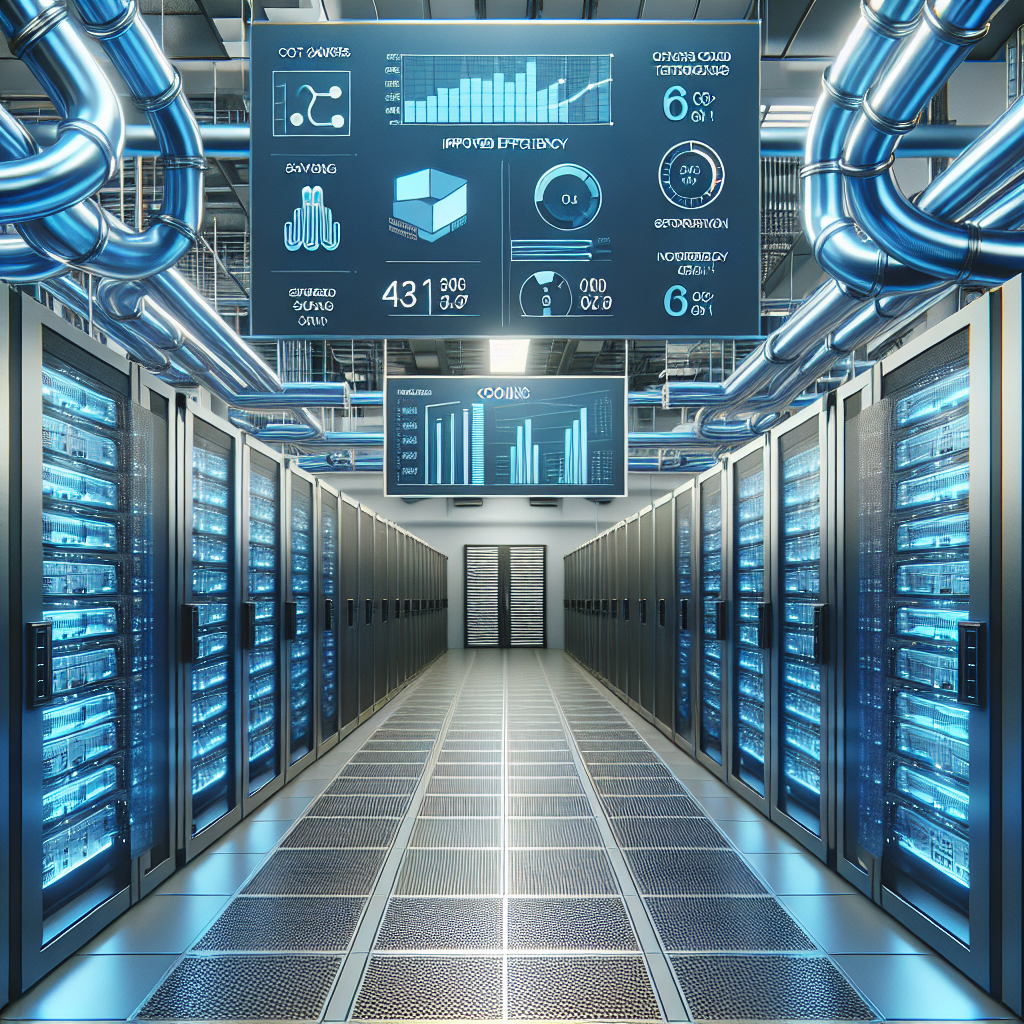
The Importance of Data Center Cooling: Strategies for Efficiency and Cost Savings
Data centers are the backbone of modern technology, housing the servers and equipment that power our digital world. As the demand for data storage and processing continues to grow, so too does the need for efficient and cost-effective cooling solutions. Data center cooling is crucial for maintaining the performance and reliability of equipment, as overheating can lead to downtime, equipment failure, and increased energy consumption.There are several strategies that data center managers can employ to optimize cooling efficiency and save on costs. One of the most effective methods is implementing a hot aisle/cold aisle containment system. By segregating the hot and cold air streams within the data center, this design reduces the mixing of air temperatures and ensures that equipment receives the appropriate cooling. This can result in significant energy savings, as cooling systems can operate more efficiently when they are not trying to cool down hot air.
Another important strategy is to utilize free cooling whenever possible. This involves using outside air or water sources to cool the data center, rather than relying solely on mechanical cooling systems. By taking advantage of natural cooling methods, data centers can reduce their energy consumption and lower operational costs.
Regular maintenance and monitoring of cooling systems is also essential for ensuring optimal efficiency. By keeping equipment clean and well-maintained, data center managers can prevent issues such as airflow blockages and equipment malfunctions that can lead to overheating. Additionally, implementing temperature and humidity sensors can help monitor conditions within the data center and adjust cooling systems accordingly to maintain optimal operating conditions.
Investing in energy-efficient cooling technologies, such as variable speed fans and precision cooling systems, can also help data centers reduce their energy consumption and lower costs. These systems can adjust their output based on the cooling needs of the data center, resulting in more efficient operation and lower energy bills.
Overall, data center cooling is a critical component of maintaining the performance and reliability of equipment, as well as ensuring cost-effective operations. By implementing strategies for efficiency and cost savings, data center managers can optimize cooling systems, reduce energy consumption, and improve the overall performance of their facilities.

Maximizing Efficiency and Savings through Data Center Vendor Management
In today’s digital age, data centers play a crucial role in storing, processing, and managing vast amounts of information for businesses of all sizes. As technology continues to advance and the demand for data storage increases, it is essential for organizations to maximize efficiency and savings through effective vendor management.One of the key components of data center vendor management is selecting the right vendors to partner with. It is important to do thorough research and due diligence to ensure that the vendors chosen have the necessary expertise, experience, and resources to meet the organization’s specific needs. By working with reputable vendors, businesses can minimize downtime, improve performance, and reduce costs in the long run.
Once vendors are selected, it is crucial to establish clear communication channels and set performance metrics to monitor their performance. Regular reviews and evaluations can help identify any potential issues or areas for improvement, allowing businesses to address them proactively and ensure that vendors are meeting their service level agreements.
In addition to monitoring vendor performance, businesses should also strive to optimize their data center operations to maximize efficiency and savings. This can be achieved through implementing best practices such as virtualization, automation, and energy-efficient technologies. By leveraging these tools and strategies, organizations can reduce their overall operational costs, improve resource utilization, and enhance the performance of their data center infrastructure.
Furthermore, businesses can also consider outsourcing certain non-core functions to specialized vendors to further streamline their operations and reduce costs. For example, managed services providers can handle tasks such as monitoring, maintenance, and security, allowing businesses to focus on their core competencies and strategic initiatives.
Overall, maximizing efficiency and savings through data center vendor management requires a proactive and strategic approach. By carefully selecting vendors, monitoring their performance, optimizing operations, and outsourcing non-core functions, businesses can effectively reduce costs, improve performance, and stay competitive in today’s fast-paced digital landscape.
